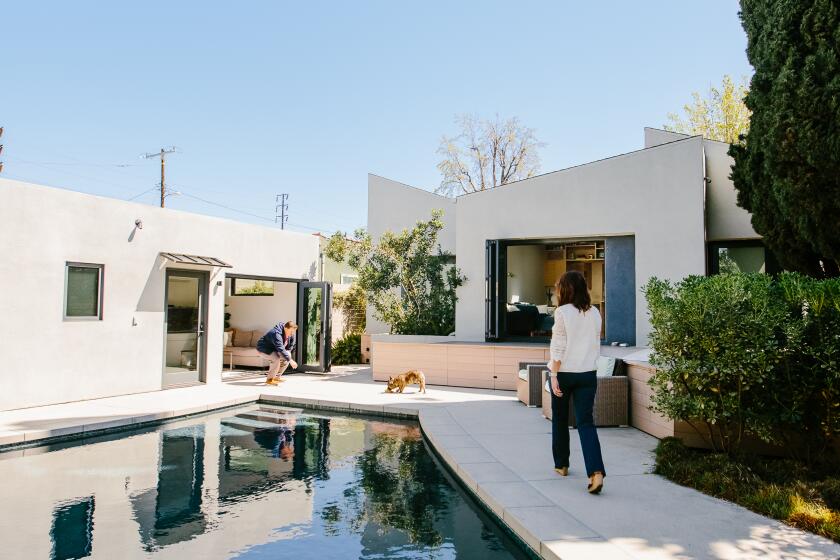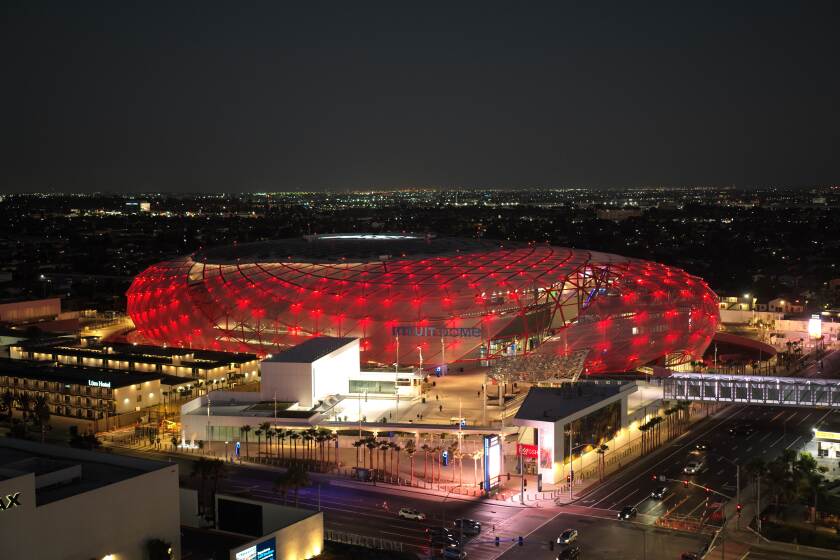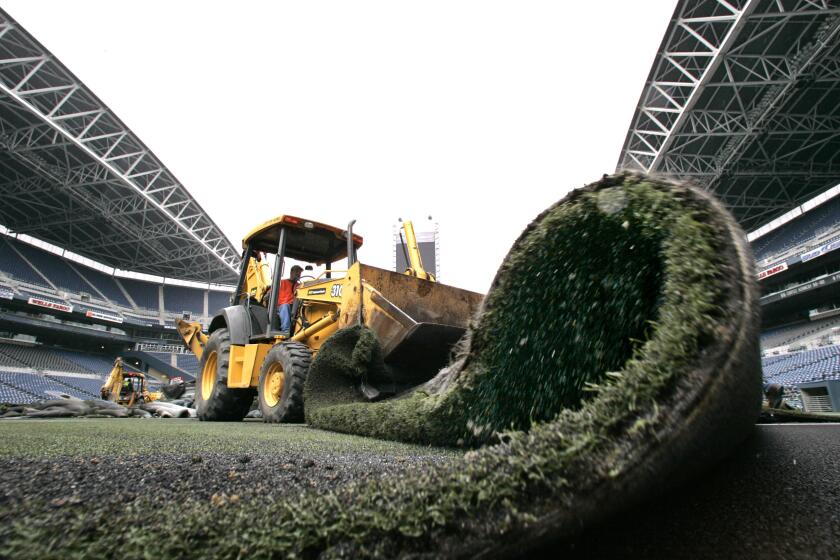The city has in its own back yard a relic of dubious quality.
I once knew a student of ceramics who gave pots to his friends as gifts as one semester progressed but later came around and said he had to have them back.
His explanation was that he intended to smash them into unidentifiable pieces so that no one would ever see such inferior examples of his work.
This little parable comes to mind in Glendale today because the city, like my friend the potter, has in its own back yard a relic of dubious quality and must decide whether to smash it into unidentifiable pieces or save it for posterity.
The relic that so troubles the city is the Public Service Building, the tallest structure in the City Hall complex and the working quarters of 175 people whose labors are usually noticed only when something goes wrong, which isn’t often in Glendale.
The building has served quietly since 1929 but is today notorious for such deficiencies as having but a single elevator that doesn’t always work and only one bathroom per floor, alternating men’s and women’s.
The mood of the work force in this gaunt old hulk rose considerably as the city planned, and then began excavation directly to the north, for a lower, sleeker, more stylish replacement, complete with an atrium, a cutaway view across the City Hall plaza and a symbolic water sculpture of the Verdugo Mountains.
Only then did the lines of engagement begin to form for another of Glendale’s perennial battles over the preservation of a historical landmark.
It appears that the city was crossed up by its own consultant, San Diego architect Milford Wayne Donaldson, who concluded that the building should be preserved and renovated.
Donaldson praised its architect, Alfred F. Priest, as one of two “who contributed greatly to the commercial and social development of the city” in the Roaring ‘20s.
Priest and his contemporary Arthur Lindley designed buildings with so much character they remain among the city’s most recognizable and cherished landmarks. Lindley’s included the United Methodist Church, the Hotel Glendale, the Alex Theatre and the Masonic Temple. Priest designed the Kiefer and Eyerick Mortuary on Harvard Street, the Security Trust and Savings Bank at Broadway and Brand and the delicate Italianate Penroy Building at Harvard and Brand, which was once one of Southern California’s well-known department stores. The Public Service Building was one of Priest’s last. He completed it two years before his death at 42.
Donaldson listed three rather convoluted reasons why it is important: First, “the vertical expression and monumentality of the east facade facing North Glendale Avenue was very progressive for the area; secondly, the dual facade treatment of the repeating architectural design on the east and west facades make a statement of civic pride to the entire community; and thirdly, the simplification of the side facades creating a frontal axis allows the design to have additional wings for later additions or new construction flanking the building on the north and south.”
Under pressure from the Glendale Historical Society, the city has now consented to conduct an environmental impact study on the demolition of the old building, even as its replacement rises, at the closest point only 10 feet away.
As this debate proceeds, what needs to be said by someone--if the architects won’t say it--is that the Public Service Building is a homely piece of work. It was the day it opened in 1929, and it has grown ever more so with the wear and tear of time.
Reading between the lines of Donaldson’s description, it is clear that Priest only designed one fourth of a building, then duplicated the front on the back and left both sides as blank as the walls of a penitentiary.
“It is quite obvious,” Donaldson concluded obliquely, “that future expansion of the Public Service Building was contemplated by Mr. Priest.”
What he meant was that the building was never completed. And now time has passed it by. Instead of consummating Priest’s idea, the city added the Municipal Services Building close to the south in the 1960s, a structure that has been dubbed neo-brutal in its style.
That juxtaposition might actually work as a progressive illustration of Glendale building styles, if the duplicate Art Deco facades were centered on long, sycamore-lined parkways, as are common in Paris.
But there is no angle of view at all for the decorative sides of the building, which face the city parking structure on one side and C&R; Clothiers on the other.
The penitentiary side dominates the primary view from the main entrance to City Hall.
If the building must go, Donaldson suggests two alternatives. One is to move it to a better location. That bizarre idea is technically feasible, Donaldson noted, but highly problematical.
His other idea is to document the building in photo and text and then hold a public wake. Though he must have intended that as the ridiculous extreme, I kind of like the idea. It offers a time-tested and humane way to release heroic but compromised works of the past.
I can’t help thinking that Alfred F. Priest, if he were alive today, would want to do with that gaunt, tired hulk exactly what my friend did with his pots.




